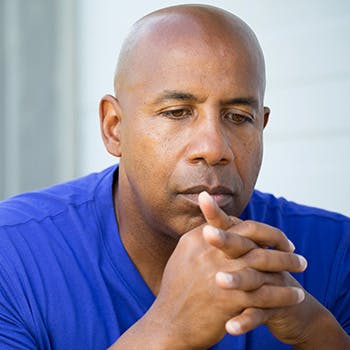All About Postpartum Hemorrhoids

You’ve just welcomed a new bundle of joy into the world, and while you knew you’d have to adjust to a shortened sleep schedule, postpartum hemorrhoids weren’t anything you were expecting. Learn why you might get hemorrhoids after birth and how to treat them.
Why Do Some People Experience Postpartum Hemorrhoids?
About 40% of pregnant people and postpartum parents experience hemorrhoids and anal fissures.1 While pregnant people may notice them during the third trimester, people who have recently given birth may experience hemorrhoids within a few days after their little one’s arrival.1
During a pregnancy, there are several factors which may lead to the development of hemorrhoids:1
- As the uterus grows during pregnancy, there is more pressure on the abdomen, as well as on the upper part of the rectum. This can cause blood circulation to decrease, even though pregnant people have an increased volume of circulating blood.
- The increase in progesterone during pregnancy may relax the walls of your veins, making them more prone to swelling and hemorrhoids.
- Constipation is common during pregnancy due to a slowed digestive tract, which may lend itself to an increased risk of hemorrhoids. A sedentary lifestyle during pregnancy, combined with an increase in the volume of circulating blood, hormones and weight gain can all be contributors.
What’s more, the risk of developing hemorrhoids during a pregnancy or immediately postpartum may correlate with the number of pregnancies and the manner of delivery.1 Vaginal childbirth significantly increases the risk of developing postpartum hemorrhoids, especially when compared to those who undergo C-sections.1
Other risks for developing postpartum hemorrhoids include:1
- Prolonged birth of 12 hours or greater
- Prolonged second stage of labor
- Straining during labor and delivery
- High weight of the newborn
- Spontaneous childbirth
- A pregnancy that extends past 40 weeks in length
Postpartum Hemorrhoid Treatment
One of the most common conditions during and after pregnancy is a thrombosed internal hemorrhoid. Before any medical action is typically given, most doctors recommend starting with a more conservative form of treatment that includes more fiber, drinking more water, avoiding constipation and healthy bathroom habits.1,2 Hemorrhoids should be treated to prevent any serious complications like inflammation, prolapse and thrombosis.2
When conservative treatment has proven ineffective, procedures and treatments that are considered minimally invasive, like rubber band ligation, or photocoagulation may be considered.1 It’s important to note that any sort of surgery is rarely considered while a postpartum parent is still actively breastfeeding their child.1 These more aggressive therapies are reserved for patients who are still experiencing symptoms of postpartum hemorrhoids after a month of conservative treatment.2
Topical treatments, like Preparation H, can provide local relief from discomfort, pain, and burning and can be used by pregnant and postpartum folks alike. They help to maintain personal hygiene and alleviate symptoms of postpartum hemorrhoids so that new parents can focus on the new addition to their family.
Source Citations:
- Perianal Diseases in Pregnancy and After Childbirth. PubMed Central. https://www.ncbi.nlm.nih.gov/pmc/articles/PMC8894587/. Accessed 9/21/22/
- Hemorrhoids in pregnancy. PubMed Central. https://www.ncbi.nlm.nih.gov/pmc/articles/PMC2278306/. Accessed 9/21/22



